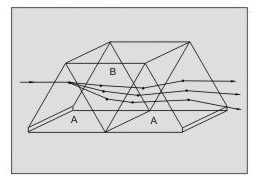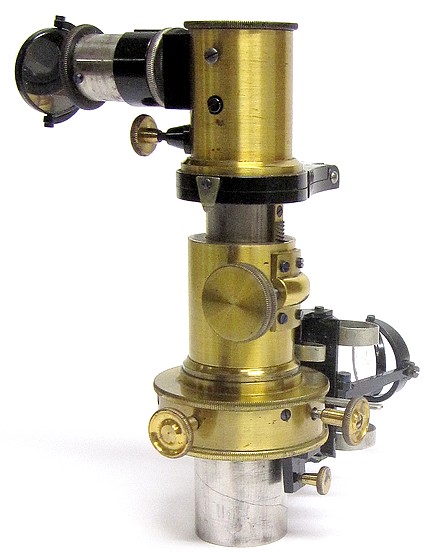

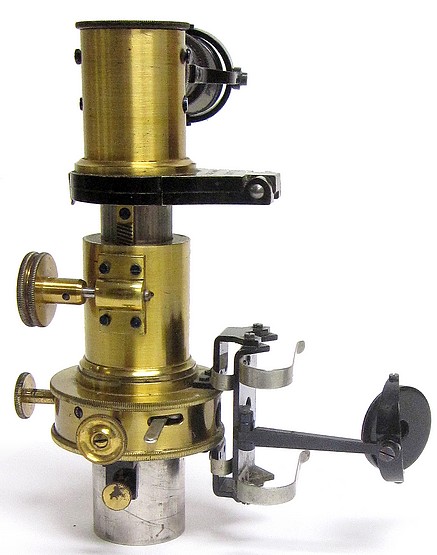
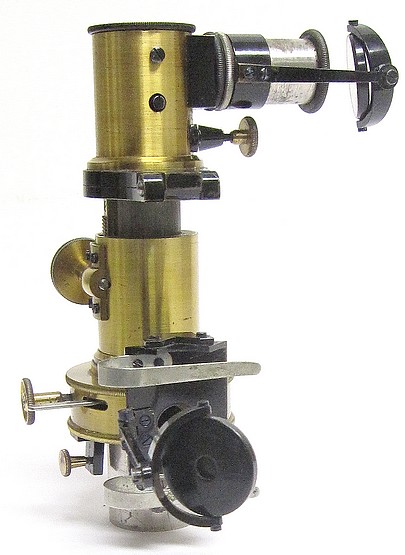

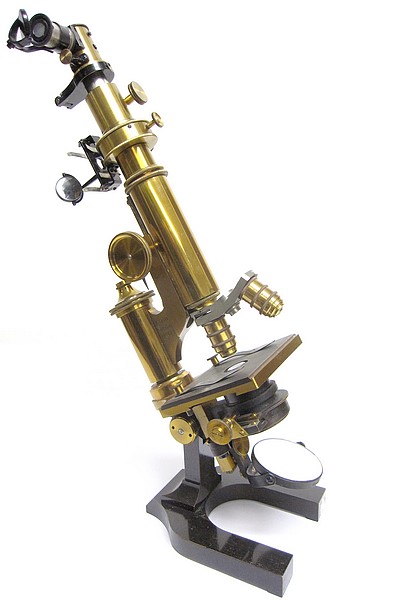
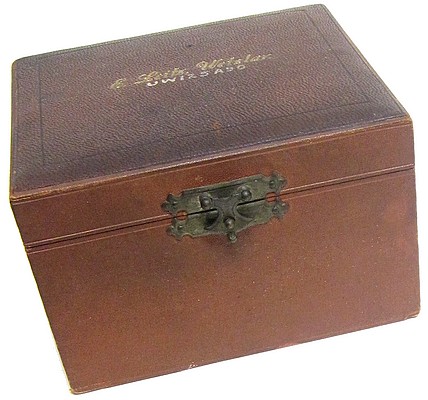
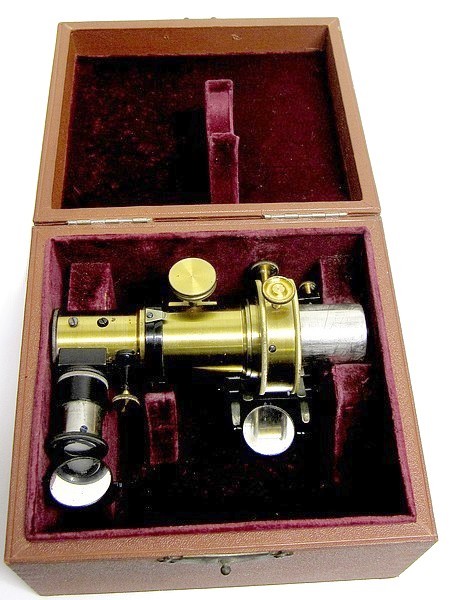
This is an Abbe microspectroscope made by E. Leitz, Wetzlar dating from the beginning of the 20th century. It is designed to replace the eyepiece of a microscope. It allows the observation and measurement of the visible absorption spectrum of a microscopic specimen. It measures about 5-inches long. The instrument is equipped with numerous adjustments and mirrors to control slit widths and light sources. A calibrated scale can be projected onto the spectrum and the spectrum of a comparison sample can be observed simultaneously with that of the specimen by placing a tube containing a solution of the sample on the stage of the microspctroscope.
The following was extracted from the 1899 Leitz catalog:

The Micro-Spectroscope fits into the tube of the microscope like any ordinary eye-piece and may be fixed in any desired position by means of the thumbscrew M. The position of the bright and dark lines of the spectrum and their respective wave lengths are ascertained by means of a scale. The flat drum A, the interior of which is shown in section, contains the slit and the comparison prism. The slit is regulated by the screws F and H. The lever T moves the comparison prism across one half of the slit. The cylinder Q above the eye-piece contains the Amici prism. At the point N of the horizontal tube RN is the micrometer scale, illuminated by the mirror O. After raising the spring-catch L the upper part of the spectroscope may be turned round the pivot K, thus allowing of the adjustment of the eye-piece.
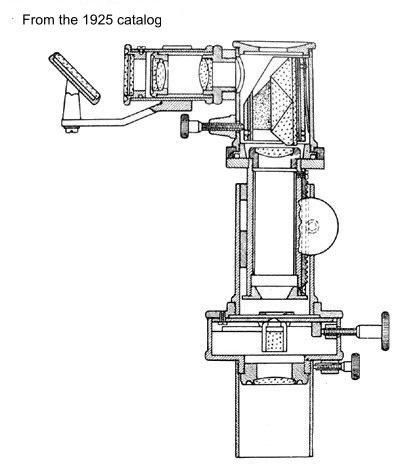
AMICI prism (Direct Vision Prism)
The AMICI prisms generate dispersion of polychromatic light with simulaneous correction of divergence. All the dispersed beam output from the prism are parallel to the input beam. These Prisms consist of three prisms, which are cemented together Two of the three prisms (A prism in the left draft) are made of different material to the other prism (B prism in the left draft). Typical combination of materials are Flint glass for A and Crown glass for B.
